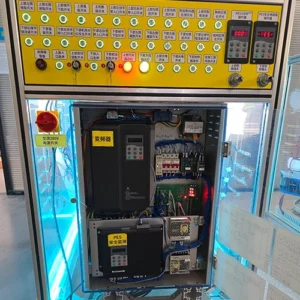Talaan ng mga Nilalaman
I-togglecontrol system
Implementing control system changes is a critical process that requires careful planning, attention to detail, and effective execution. This article aims to provide a comprehensive guide on how to successfully implement control system changes, highlighting the advantages and application fields that customers commonly seek. By following these steps, organizations can enhance their operations, improve efficiency, and meet ever-evolving industry demands.
Identify the Need for Change:
Before delving into the implementation process, it is crucial to identify the specific need for a control system change. This can be triggered by various factors such as technological advancements, evolving regulations, or the need for improved productivity. For instance, consider an automotive assembly line that requires a control system change to incorporate automated robotics. This change would optimize production efficiency, reduce costs, and ensure consistent product quality.
Magtakda ng Malinaw na Layunin:
Once the need for change is identified, establish clear objectives to chart a path towards success. This step involves defining measurable goals to drive the control system change. For instance, in the case of the automotive assembly line, objectives might include reducing production time by 15%, minimizing defects to less than 0.5%, and increasing overall output by 20%.
Develop a Comprehensive Plan:
A well-designed plan is crucial for a successful control system change. This entails defining tasks, assigning responsibilities, and establishing timelines. Each step in the plan should be meticulously outlined to ensure an organized and structured implementation process. For example, in the automotive assembly line scenario, tasks might include conducting a feasibility study, identifying suitable robotic systems, and designing a seamless integration process.
Thoroughly Assess Risks and Mitigation Strategies:
A sound risk assessment is vital to identify potential obstacles and develop effective mitigation strategies. By thoroughly evaluating risks, organizations can minimize disruptions and optimize the control system change. Consider potential risks in the automotive assembly line scenario, such as equipment malfunctions, integration challenges, or workforce resistance. Developing contingency plans to address these risks ensures a smoother transition.
Execute the Planned Change:
With a well-crafted plan and adequate risk mitigation strategies, it’s time to execute the control system change. This phase involves the actual implementation of the proposed modifications. Here, coordination and communication among various stakeholders are critical for seamless integration. For example, in the automotive assembly line case, technicians, engineers, and production staff need to collaborate closely to ensure successful installation, calibration, and testing of the robotic systems.
Monitor and Evaluate:
Once the changes are implemented, it is essential to monitor system performance and conduct evaluations to verify whether the objectives are being met. This phase helps identify any gaps or areas requiring further refinement. In the automotive assembly line example, monitoring may involve evaluating the time taken for production cycles, fault detection frequency, and overall productivity.
Implementing control system changes requires a well-structured approach to ensure successful outcomes. The step-by-step process outlined above provides organizations with a framework to effectively manage control system changes, optimize operations, and adapt to evolving industry needs. By initiating change, setting clear objectives, developing comprehensive plans, mitigating risks, executing diligently, and continually monitoring and evaluating, organizations can achieve seamless control system transformations that drive success in their respective fields.


